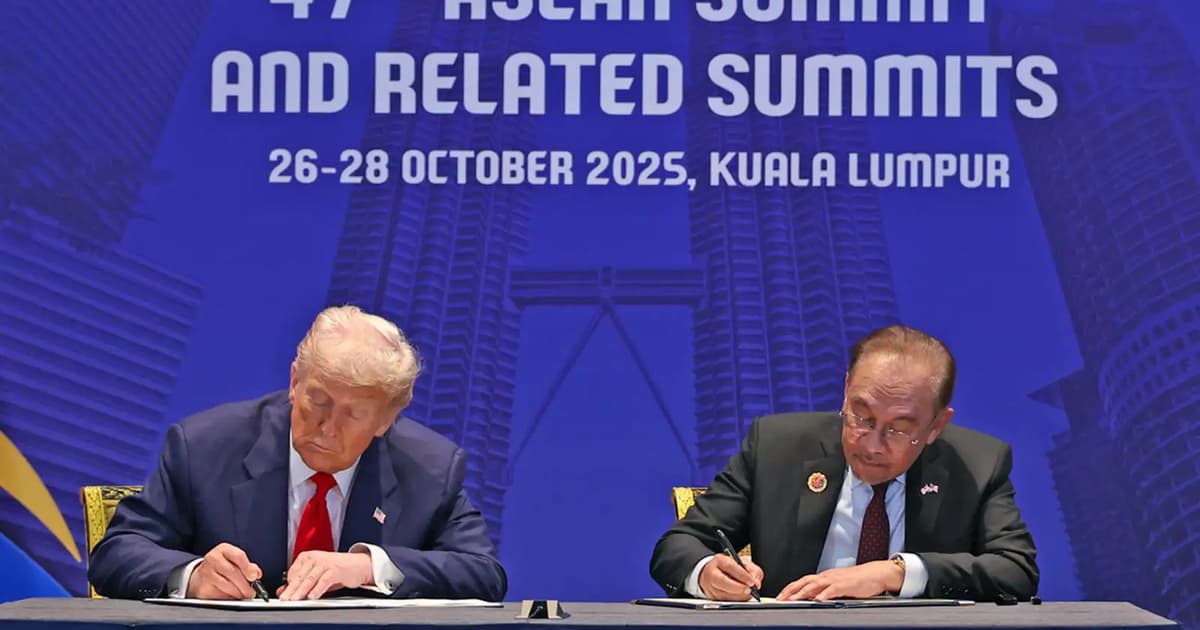
From Mazli Noor
The Malaysia-US Agreement on Reciprocal Trade (ART) announced recently will see Malaysia channel RM294 billion in job-creating investments into the US over the next 10 years.
The agreement is the result of months of negotiations specifically designed to offset Malaysia’s trade surplus and boost American domestic economic figures.
Given its political nature, devoid of any fiduciary responsibility, prudence, and policy coherence, it is clear that investments under the ART will largely fall on the nation’s government-linked investment companies (GLICs).
The onus on us now is to assess how it will affect Malaysia’s long-term economic interests, whether our GLICs are being positioned for success or structural compromise, and how to mitigate the risks that will arise.
GLIC capacity: strength within limits
Malaysia’s six GLICs collectively manage assets exceeding RM2,065.96 billion, with four institutions maintaining sophisticated overseas operations: the EPF, Permodalan Nasional Bhd, Khazanah Nasional Bhd, and Kumpulan Wang Persaraan. All have significant experience in navigating international capital markets with existing US exposure.

However, institutional capability is not unlimited flexibility. The ART represents approximately 15% of the combined assets under management (AUM) of the four GLICs that one can anticipate will shoulder the bulk of the investment burden.
Spread evenly across, all four would therefore exceed the 30% overseas portfolio threshold set by the prime minister earlier this year, with EPF and Khazanah approaching or exceeding 50% foreign exposure.
The question before us is not if US markets are attractive. The S&P 500 equities market currently averages 10% p.a. – registering a 12.8% gain in the last 10 years – with a vibrant start-up ecosystem that averages 20% in internal rates of return.
The question is whether such a concentrated commitment in a single foreign market, regardless of its quality, represents the optimal portfolio for institutions with explicitly domestic-focused mandates. This is not prudence or flexibility; it is policy incoherence that places fund managers in an impossible position.
The proposed alternative i.e. to rapidly expand AUM to accommodate both objectives is unrealistic, given current market volatility and the compressed 10-year implementation timeline. Asset growth of the magnitude required cannot be realised through policy fiat; it requires favourable market conditions, sustained returns and contribution growth, none of which can be guaranteed in the current environment.
Macroeconomic consequences: beyond portfolio metrics
The broader economic implications of this commitment extend well beyond GLIC balance sheets and the need for transparent public discussions.
Currency market pressure:
The ART requires substantial acquisition of the US dollar, creating persistent structural demand for foreign currency over the next decade. Its emphasis on job creation in the US means these investments will be long-term capital commitments with limited near-term repatriation potential.
This directly contradicts stated government objectives to support ringgit valuation. We cannot simultaneously strengthen our currency while engineering long-term capital outflows of this magnitude. The economic logic is contradictory.
Accelerated capital flight:
Malaysia’s equity markets are already under pressure, with foreign capital outflows reaching RM16.4 billion in the first nine months of 2025 alone – four times the RM4.2 billion outflow for the entire 2024. A structurally weakened ringgit with limited upside will only incentivise further foreign investor exit as they rotate towards stronger currency-denominated opportunities. We risk creating a self-reinforcing cycle of currency weakness and capital flight.
Opportunity cost to domestic development:
Every ringgit committed to meeting this quota is a ringgit unavailable for domestic infrastructure, technology development, and industrial capacity building.
While the government correctly emphasises Malaysia’s need for economic transformation, this agreement fundamentally redirects capital away from that transformation towards job creation in the US. We must ask whether this represents an optimal allocation of increasingly scarce natural resources.
The way forward
We do not oppose international investment or US market exposure in principle. We must however call out the subordination of fiduciary duty and portfolio prudence to diplomatic expediency. Malaysia’s GLICs manage the retirement security of millions, the strategic reserves of the nation, and the pension promises made to public servants.
The die has been cast but the rakyat deserve clarity. The government must address these contradictions before the ART is implemented in any real form.
Will there be a parliamentary oversight mechanism in place for the major investment decisions? Can transparent risk assessments be published for parliamentary, if not public, scrutiny? This is not obstructionism — it is the least we must expect in responsible governance.
Mazli Noor serves on the boards of several public and private companies and is an FMT reader.
The views expressed are those of the writer and do not necessarily reflect those of FMT.






